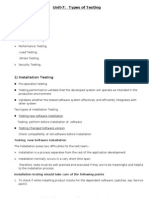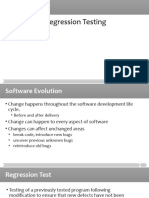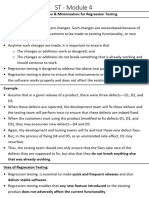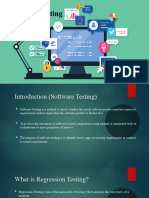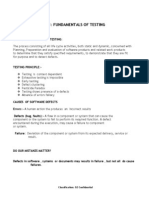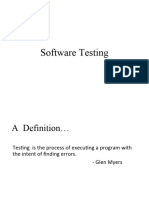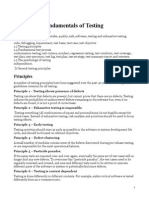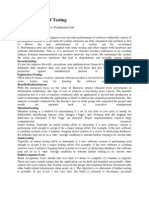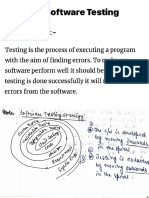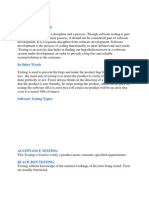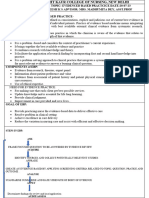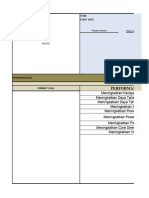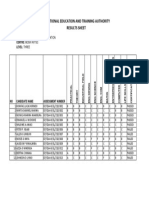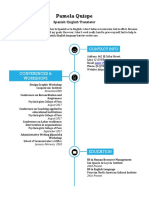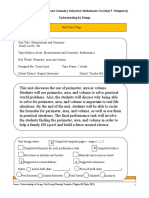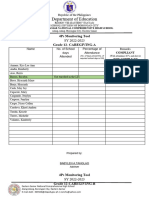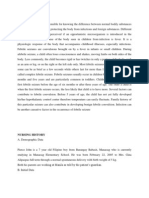0% found this document useful (0 votes)
26 views9 pagesRegression Testing and Encapsulation
This document discusses regression testing and encapsulation. Regression testing involves retesting software after changes to ensure existing functionality was not broken and changes work as intended. It includes impact analysis, prioritizing test cases based on criticality and frequency of use, and focusing testing on areas like integration points and complex functionality. Encapsulation involves wrapping data and methods together within a class and controlling access via public methods to hide internal details and protect against changes breaking code. Benefits include flexibility to modify implementations without affecting other code and maintainability.
Uploaded by
appleusr2000Copyright
© © All Rights Reserved
We take content rights seriously. If you suspect this is your content, claim it here.
Available Formats
Download as PPTX, PDF, TXT or read online on Scribd
0% found this document useful (0 votes)
26 views9 pagesRegression Testing and Encapsulation
This document discusses regression testing and encapsulation. Regression testing involves retesting software after changes to ensure existing functionality was not broken and changes work as intended. It includes impact analysis, prioritizing test cases based on criticality and frequency of use, and focusing testing on areas like integration points and complex functionality. Encapsulation involves wrapping data and methods together within a class and controlling access via public methods to hide internal details and protect against changes breaking code. Benefits include flexibility to modify implementations without affecting other code and maintainability.
Uploaded by
appleusr2000Copyright
© © All Rights Reserved
We take content rights seriously. If you suspect this is your content, claim it here.
Available Formats
Download as PPTX, PDF, TXT or read online on Scribd
/ 9



